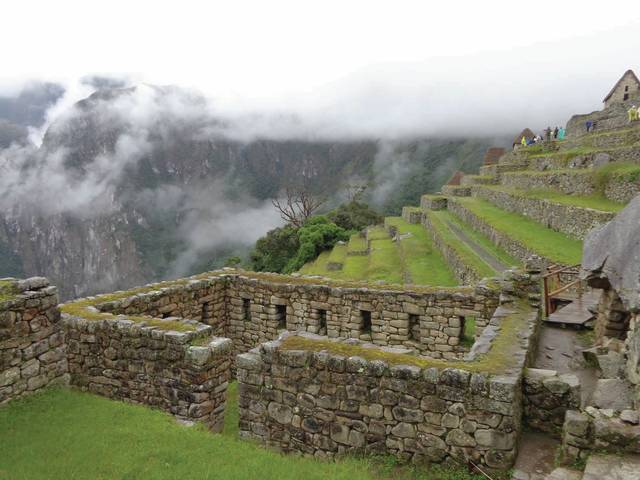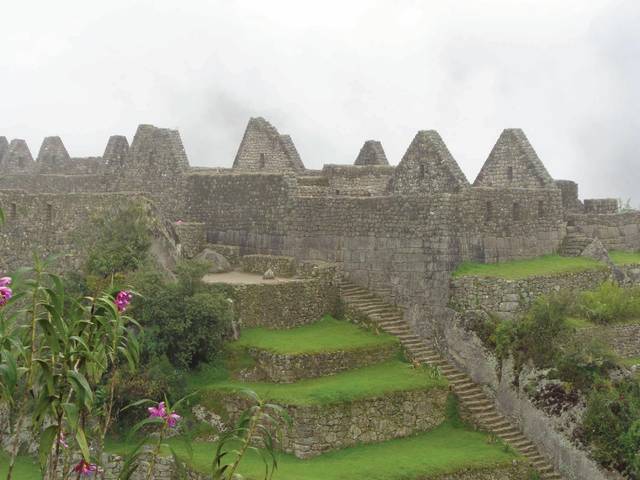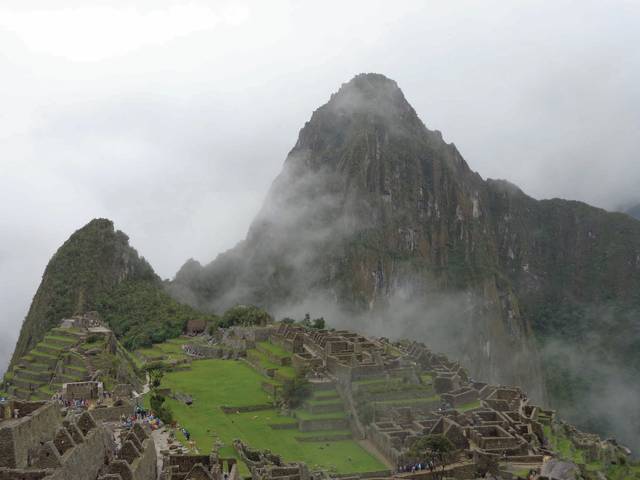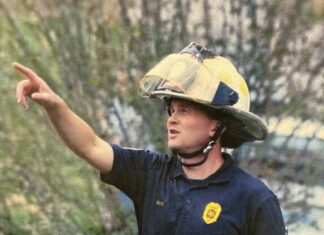Three hundred feet. By my own rough calculations, that was the distance that stood between us and the top of Machu Picchu Mountain in Peru. We had already climbed for two hours over at least 1,800 feet of stones made slick by the morning rain. Breathing had become difficult due to the oxygen-sucking altitude upon the top of Machu Picchu itself, 10,000 feet above sea level. We had already passed two sections of stairs adjacent to what the guidebook described as “harrowing, sheer drops.” What’s 300 feet more?
If we make it, then there’s the promise of one of the most breathtaking views of Machu Picchu. What’s the reward if we only almost make it to the top? Isn’t it good enough that we’d climbed 1,800 feet?
Gripping the muddy rocks on our right, we looked up to assess our situation. We faced about 10 stone steps that hugged the mountain but narrowed from about three feet wide to a foot wide as they ascended. On the left, a sheer drop. Above the top step, just a misty sky. What awaited us on the right? More steps? Yet another sheer drop? We could not be certain.
I was, however, certain I was finished attempting to coax myself up the rest of that mountain. Even today, I’m glad I climbed what I climbed, but I do not regret the decision to stop short of reaching the top. My husband, on the other hand, boldly finished the climb. He, too, does not regret his decision. We met back up with each other on the descent, an easier, albeit still daunting hike.
Although we chose to climb the mountain to maximize our experience, it’s important to note this is an optional trek at Machu Picchu. And whether or not one climbs the mountain will not make or break an unforgettable experience at one of the New Seven Wonders of the World, a title Machu Picchu has been enjoying since 2007. Add, also, to its impressive list of distinctions: being named a UNESCO World Heritage Site in 1983 and a Peruvian Historical Sanctuary before that in 1981. Not bad considering the citadel was constructed in the early 1400s, abandoned about 100 years later, and known only locally until American historian Hiram Bingham’s work brought it back to the world’s attention in 1911.
As dramatic as the mountain trek can be, wandering and wondering through the archaeological citadel of Machu Picchu is equally as dramatic, save the physically challenging part. Upon reaching the site after an extensive bus ride that cut up the hill in the most absurd switchback I’ve ever experienced, we chose to head counter-clockwise, in the opposite direction of the crowd. This allowed us to, at least for a little while, enjoy the experience without competing with too many other travelers.
Much, but not all, of this legacy to Incan civilization has been restored, so meandering through the spectacular stone structures, the rows of terraces and the lush landscape can be achieved with little effort. Experts and archaeologists continue to speculate on the function and purpose of much of the array of stonework, offering theories related to astronomy, religion and agriculture. This, as well as the tangible misty shroud that intermittently envelops the site, lends to the captivating mystery of Machu Picchu.
Every remarkable aspect of our journey – the choice to climb Machu Picchu Mountain, the bus ride to the citadel, the elaborate stone masonry – all stole this gal’s breath away. In more ways than one.
(Note: Marjorie Appelman is an English, communications and journalism teacher at Mason County High School and co-founder of the travel blog, Tales from the Trip, which is also on Twitter, Instagram and Facebook. She can be reached at [email protected].)








